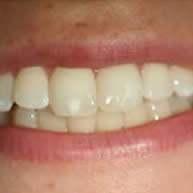Usually in your late teens and early twenties, your final set of molars, or wisdom teeth, erupt. Some people never have any issues with their wisdom teeth, but usually these molars are misaligned and require removal. Wisdom teeth that come in crooked can crowd other teeth and make you more vulnerable to tooth decay. When wisdom teeth only partially break through the soft tissue, they are considered impacted, which can result in pain, swelling, and susceptibility to illness.
Often, a dentist or oral surgeon will recommend removal of wisdom teeth before any problems arise. Extracting wisdom teeth is easier on young people because the roots are not fully developed and the bone is less dense. Older patients can have a more difficult time with the healing and recovery process.
Before scheduling the extraction, your dentist will take X-rays and examine your mouth to assess the situation with your wisdom teeth. If the wisdom teeth have broken completely through the gum line, the extraction is as simple as any tooth removal. Impacted wisdom teeth will need an incision in the gum and will likely require removal of the tooth structure in pieces.
To remove your wisdom teeth, the dentist will use a local anesthetic to numb the teeth and surrounding tissue. Often, patients having wisdom teeth extracted also choose sedation options like nitrous oxide or oral conscious sedation, which will lessen any anxiety about the procedure. After the appointment, your recovery will depend on the difficulty of the extraction. Usually, patients experience some bleeding and facial swelling. You can take over-the-counter pain medication for discomfort, or your dentist may prescribe something stronger if necessary.
We look forward to seeing you in our Hunderton County dental office





